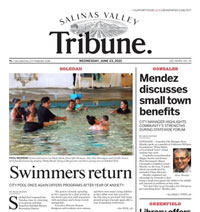In response to the 1994 Northridge earthquake, California enacted stringent seismic safety standards for hospitals under the Alfred E. Alquist Hospital Facilities Seismic Safety Act. While crucial for ensuring the safety and functionality of hospitals during and after seismic events, this mandate has presented significant challenges in terms of financial burden, logistical complexities, and policy execution. Under current law, any hospital building that does not meet the State of California’s 2030 seismic standards could be forced to close.
The seismic mandate requires hospitals to retrofit or replace buildings that do not meet specific seismic safety standards. The initial compliance deadline was set for 2008 but later extended to 2020. Additional adjustments have moved critical deadlines to 2030.
It is important to note that California hospitals already meet the 2020 seismic requirements, ensuring safety for patients and employees in the event of an earthquake. Billions of dollars have been spent to retrofit and rebuild facilities — making hospitals some of the safest buildings in the State. Many healthcare leaders and supporters feel that the 2030 requirements are excessive and impractical, forcing hospitals to divert vital funds from patient care and service lines.
One of the primary challenges this mandate poses is the immense financial burden placed on individual hospitals. Estimates suggest that the cost to comply with the standards fully could exceed $100 billion statewide. This figure is daunting for hospital systems and especially intimidating for small rural facilities.
While some state and federal funds are available to facilities that meet specific criteria, much more is needed to cover the scope of the required upgrades. This gap in funding creates significant inequity, with large urban hospitals and systems more able to comply than small rural facilities, which could ultimately face the risk of closure due to the prohibitive costs, reducing access to essential healthcare and emergency care for those communities impacted.
Mee Memorial Healthcare System already meets the 2020 seismic standard, and our facility is structurally sound. In addition, we have been planning for the 2030 mandate for several years, working to fulfill state requirements. We can confidently state that our facility will stand and that patients and staff will be safe in the event of an earthquake.
Even beyond the financial burden, the logistical challenges of retrofitting or rebuilding hospital facilities can be formidable. Hospital construction is inherently complex due to strict regulations and the need to maintain services and operations throughout construction. Hospitals must develop precise phased plans that minimize disruption to patient care. Each project must meet stringent safety standards, adding layers of regulatory compliance and inspection which can be fraught with bureaucratic hurdles, resulting in extended project timelines and significantly increased costs.
Barely more than a third of California hospitals have met the primary 2030 seismic requirements. Diverting substantial resources to meet the looming deadline will seriously impact the ability to provide access to health care and keep service lines open and available to communities across rural California.
Hospitals are working steadily toward compliance, but across the State, they are asking for more time. The California Hospital Association has determined that to meet the deadline, hospitals report that they will need to:
• Forgo expansion of new service lines, 66%;
• Temporarily close certain service lines, 63%; and
• Permanently close certain service lines, 45%.
If Mee Memorial Healthcare System were forced to close due to not meeting the mandate deadline, the South County community would have no access to hospital and emergency services between Templeton and Salinas, almost a 50-mile radius.
The 2030 seismic mandate for California hospitals reveals a clear need for balance and support. While ensuring that hospitals remain functional after a major earthquake is undeniably crucial, achieving the 2030 requirements is challenging to the point of closure for some healthcare facilities. It requires a multi-faceted approach involving an extended critical deadline, increased state and federal funding, and more efficient and affordable regulatory processes.
The 2030 seismic mandate ultimately represents a vital investment in public safety and health — we would all agree that this is good for everyone. However, the key to a successful outcome is a feasible and realistic pathway for hospitals, especially in vulnerable rural communities. By working to support our hospitals, California can further enhance the resilience of its healthcare infrastructure, ensuring that hospitals can continue to serve their communities in times of greatest need.
I invite you to join Mee Memorial and other California hospitals in supporting the progress of Senate Bill 1432. This bill aims to extend the 2030 seismic compliance deadline to 2033, with potential extensions of up to five additional years. This would provide healthcare facilities with much-needed time to reach compliance goals in a way that is less impactful to patient care. Please contact my office if you would like to learn about additional ways you can offer your support.














